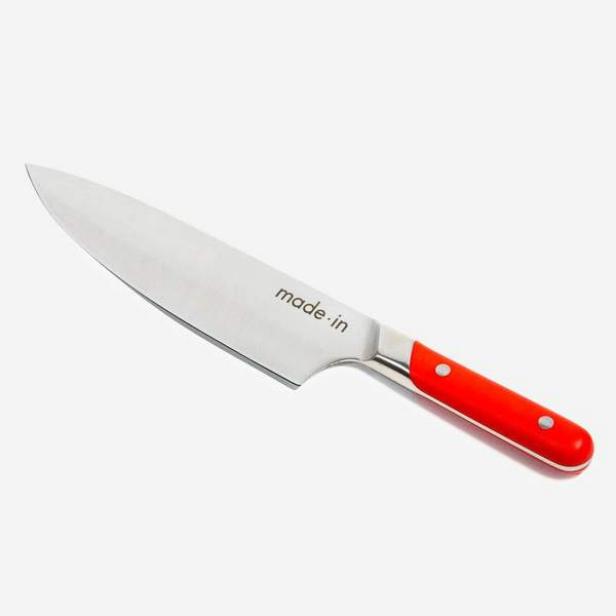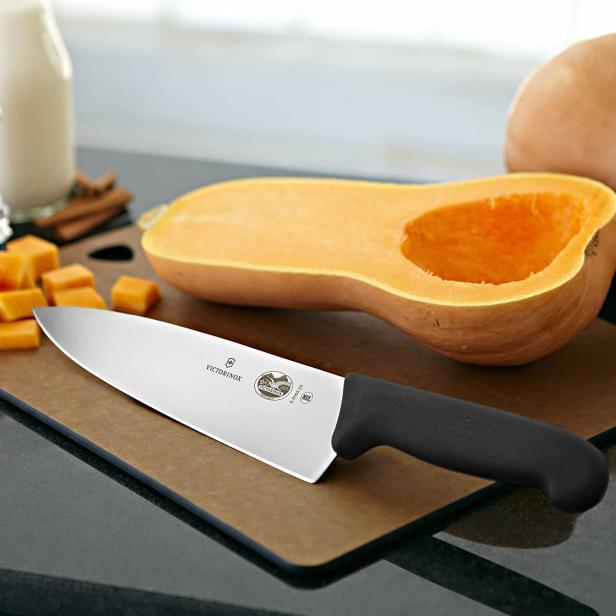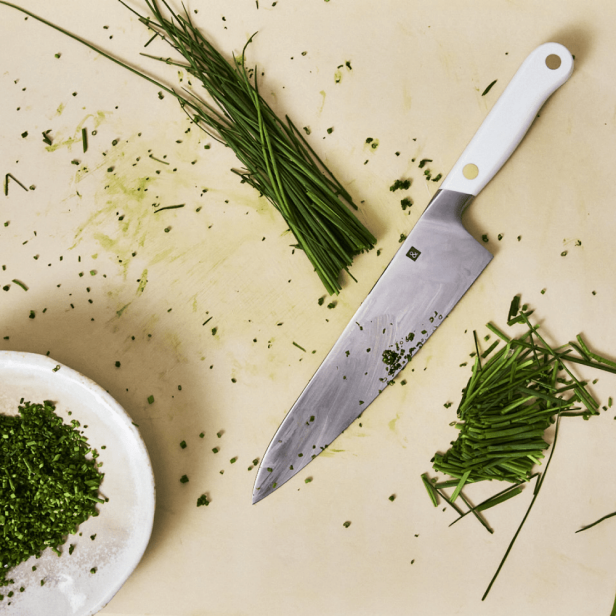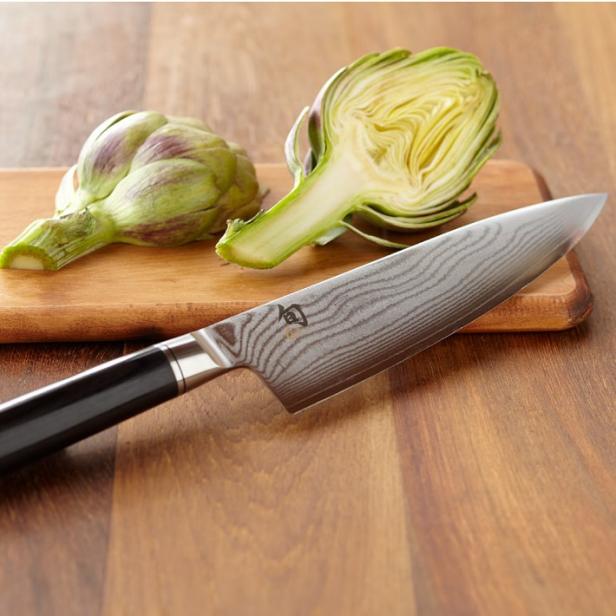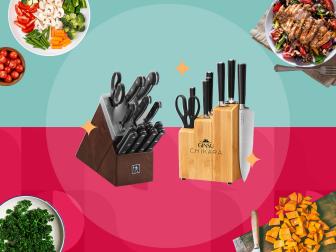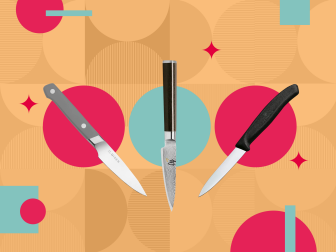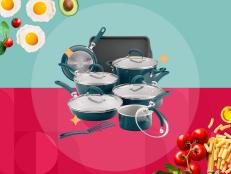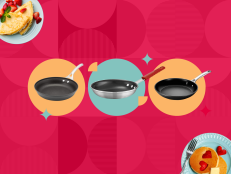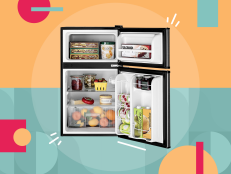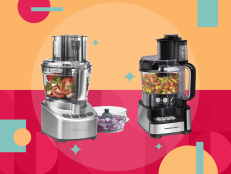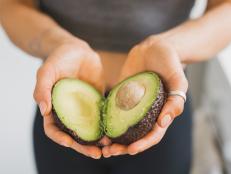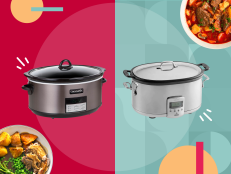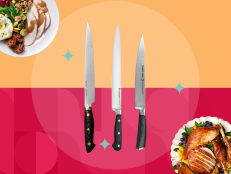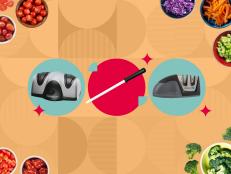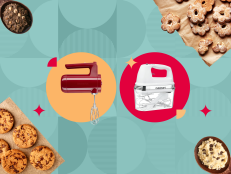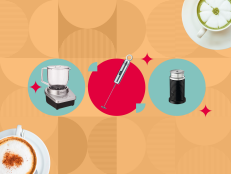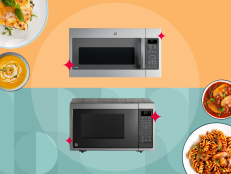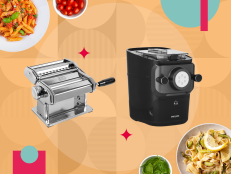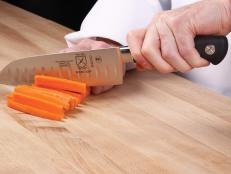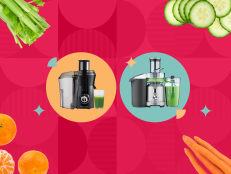7 Best Chef's Knives of 2024, Tested and Reviewed
We chopped, sliced and diced to find the top-performing chef's knives.
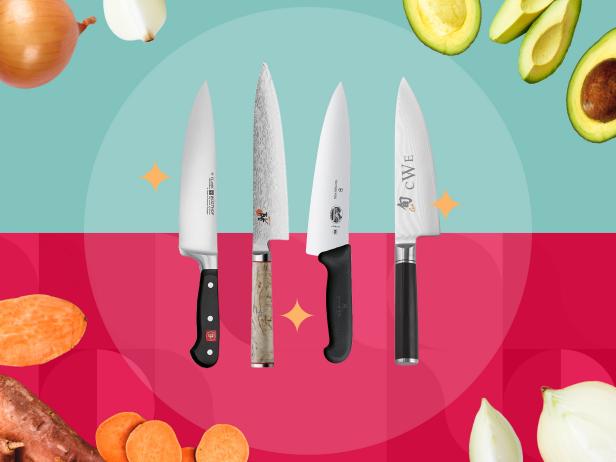
Our Top Chef's Knife Picks
- Best Overall: Made In 8-Inch Chef Knife and Misen 8-Inch Chef's Knife
- Best Budget Knife: Victorinox Fibrox 8-Inch Chef’s Knife
- Best Value: Hedley & Bennett 8-Inch Chef's Knife
- Best for Butchering: Wusthof Classic 8-Inch Chef's Knife
- Best Japanese-Made Chef's Knife: Shun Classic Western 8-Inch Chef’s Knife
- Best for Precision Cuts: Miyabi Birchwood 8-Inch Chef’s Knife
Tested by Layla Khoury-Hanold
If there’s one kitchen tool that’s indispensable for professional chefs and home cooks alike, it’s a chef’s knife. Though a good chef’s knife is a must-have, what constitutes the best is more subjective than for other kitchen tools. Think about the task at hand: Are you planning to use it for a lot of prep work? Are you looking for a butcher knife? Maybe you need something to execute precision cuts on more delicate ingredients. All these things affect which knife will be the best fit for you. Here are our top picks for the best chef's knives for a variety of kitchen tasks.
This article has been updated since its original publish date with a new "best value" pick. It has also been reviewed since its original publish date for accuracy, pricing and availability. We stand by our list of top chef's knife picks.
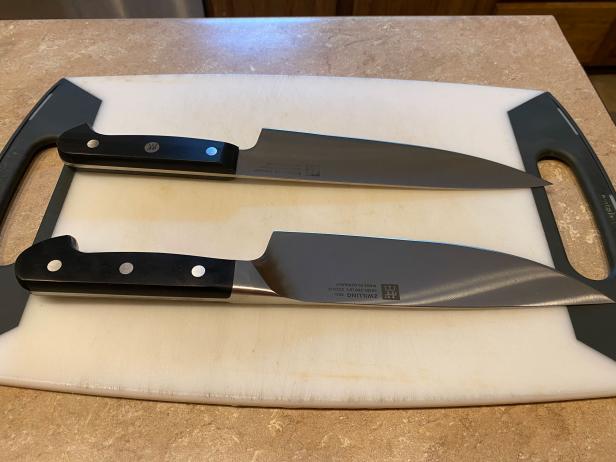
Layla Khoury-Hanold
How We Tested
We purchased 10 top-rated chef’s knives according to various online sites, reviews and bestseller rankings. We tested 8-inch chef’s knives in a range of price points. We chose to test 8-inch knives because it is the length that feels the most comfortable and secure on average. Most knives we tested were Western-style blades (sharpened at an angle on both sides); there was one Japanese-style blade, which is only sharpened at an angle on one side. Western chef’s knives also tend to be more readily available in the U.S. and their sharpness can be easier to maintain with at-home knife sharpeners.
First, we noted the chef’s knife’s size, weight, price, material, manual, instructions for use and care, as well as any special claims or features. We noted whether a manual was included with the knife, and if so, whether it was easy to read. We also noted if the manual provided clear instructions for first use, cleaning, maintenance and storage. We also noted if the manual provided helpful hints for proper usage. We also made note of features and evaluated any special claims throughout testing, such as non-slip, ergonomic handles, resisting stains or corrosion or holding sharpness longer.

Layla Khoury-Hanold
To test each chef’s knife, we performed the following kitchen preparation tasks:
- We sliced one Roma tomato to test for sharpness by evaluating how easily it sliced through the skin.
- We sliced a medium white onion in half and noted how easily the knife sliced through the onion and whether we could easily cut through the outer layers of dry skin and the root tip. We also sliced the onion and noted if anything stuck to the blade to assess for clean cuts. We also noted whether the sharpness of the knife helped to mitigate eye watering or tearing while slicing.
- We diced one medium, unpeeled sweet potato and noted how easily the knife sliced it in half, then into planks, sticks and cubes to assess how the knife responded to denser foods.
- We chiffonaded three basil leaves and noted how easily it sliced through the herb and whether it left any bruising.
- We sliced one standard raw, boneless, skinless chicken breast and noted how easily the knife sliced it into strips and whether the chicken stuck to the blade.
The majority of the chef’s knives we tested specified to hand-wash only. We hand-washed each knife after each cutting task and observed how easy it was to wash, considering how easily ingredient residue washed off and how much power was required to clean the knife after ingredients with a higher tendency to stain, including sweet potatoes and basil. We also noted whether the directions specified to dry the knife immediately after washing, and if it didn’t, noted if the knife rusted or retained water spots while sitting on a drying rack. We used the dishwasher to wash any knives that claimed to be dishwasher safe.
- Sturdy yet comfortable construction
- Efficient and consistent performance
- Lightweight
- Requires more effort to cut denser foods
We loved the Made In 8 Inch Chef Knife for its sturdy construction (it’s fully forged from a single rod of premium metal) and ability to tackle any cutting task with excellent results. Hardly any effort was required for tasks like slicing tomatoes and cutting through an unpeeled onion and slicing it. This knife required a little more elbow grease for cutting denser foods like sweet potatoes, and though it was easy to chiffonade basil, we noticed that the leaves were moderately bruised. It feels sturdy yet not too heavy in the hand, weighing in at .5 pounds and the handle provides a comfortable grip that’s conducive to a rhythmic rocking motion for slicing. It washed up easily by hand with warm, soapy water, though it needed extra scrubbing after dicing sweet potatoes. We appreciated that it came with a sheath for storing the knife and liked the polished packaging, complete with a branded bandage (just in case!). Overall, this is a great workhorse knife and its price makes it a great value, especially when compared with other name brand manufacturers with a similar design.
- Blade Length 8.5 inches
- Weight 8 ounces
- Handle Material Steel (Olive wood option available, also)
- Dishwasher-Safe No
- Lightweight and easier to maneuver
- Great overall value
- Comes with 60-day, risk-free home trial
- Requires more pressure to cut denser foods
Another solid, all-around chef’s knife at a great value is the Misen Chef’s Knife. If you’re just getting comfortable with using a chef’s knife, the 8-inch Misen is lightweight and easy to maneuver, which can be helpful for beginners. It performed all of the cutting tasks with ease, though we found that some ingredients like onion slices and chicken breast strips stuck to the knife. As with the Made-In, extra pressure needed to be applied to cut the sweet potato in half, but it performed better on the basil chiffonade, leaving minimal bruising. It wipes clean after most cutting tasks though extra scrubbing was needed to erase the marks left from dicing the sweet potato. The Misen also comes with a card insert that provides helpful tips for holding the knife and care instructions to extend the life of your knife. It was among the least expensive knives we tested, and we appreciated that it comes with a 60-day home trial so you can try it out risk-free. If you decide to keep it, it comes with a lifetime guarantee.
- Blade Length 8 inches
- Weight 8 ounces
- Handle Material Steel
- Dishwasher-Safe No
- Budget-friendly
- Good for heavy prep
- Non-slip comfortable handle
- Requires more pressure for denser ingredients
Victorinox has earned a reputation for its Swiss-made knives and this model is a great all-around knife at an affordable price. It delivered on its promise of a non-slip ergonomic handle, offering a sure, comfortable grip that makes it an ideal choice for beginners, too. It easily sliced through a tomato, onion and raw chicken breast with little-to-no sticking. In addition to requiring more pressure to cut through the sweet potato, we also had to push down on the blade to cut it in half. After the task to chiffonade basil leaves, we detected a moderate amount of bruising. The Victorinox Fibrox also claims that the tapered knife edge, ground in two directions, helps it hold a sharp edge longer. But we observed that the knife was noticeably duller after completing the testing process; we tested this by cutting another tomato at the end of testing and noted that it didn’t pierce the tomato’s skin as easily as when the knife was out-of-the-box sharp.
The knife washed up easily with warm, soapy water, though it required extra scrubbing after cutting the sweet potato and we noticed visible marks on the knife after it was washed and dried. The knife is dishwasher safe and we didn’t note any discoloration or changes in the knife after running it through the dishwasher (though to protect the blade and extend the knife’s sharpness, hand washing your chef’s knife is a good rule of thumb to follow). The knife is relatively inexpensive, so the packaging is a simple plastic clamshell (which was hard to open) and doesn’t come with any user manual or helpful hints. But overall, this is a great option for heavy prep use at a wallet-friendly price.
- Blade Length 8 inches
- Weight 8 ounces
- Handle Material Plastic
- Dishwasher-Safe Yes
- Comfortable grip
- Consistent control and performance
- Razor-sharp edge
- A little more expensive than our top picks
This brand has a reputation for crafting kitchen gear that’s made for chefs, by chefs, so our expectations were high. And from the first slice of tomato, we could tell it was going to be a winner. This knife costs a little more than some of our top picks, but it offers great value by delivering on several promises: It has a comfortable grip, feels light-weight yet solid in the hand, and boasts a razor-sharp edge with a 23-degree blade angle (it even cut some of our kitchen towel when drying it, so take extra care!). We found that the knife yielded consistent control and results when used on a variety of ingredients, whether slicing onions and chicken breasts, chiffonading basil or dicing sweet potatoes (though it does require a little extra pressure help to cut denser foods in half, like the sweet potato). The three-layer Japanese steel promises an ideal blend of sharpness and durability, which the manufacturer backs with a lifetime guarantee. It comes in three colors — enoki white, shiso green or caviar black — with handsome brass rivets, making it a stylish addition to your kitchen arsenal, too.
- Blade Length 8 inches
- Weight 6.4 ounces
- Handle Material Steel
- Dishwasher-Safe No
- Durable construction
- Handles denser ingredients well
- Washes up easily
- Heavier and harder to maneuver than top picks
- Expensive
This German-made knife is forged from a single piece of sturdy high-carbon steel and built for durability. It is a solid knife that performs well on a variety of kitchen prep duties; it felt slightly heavier and harder to maneuver than the Made-In or Misen chef’s knives when it came to tasks like slicing a tomato or chiffonading basil. However, this heft is an advantage for slicing denser foods like sweet potatoes or the thick outer layers of onions. We also liked that ingredients such as onions and raw chicken breast didn’t stick to the blade during slicing.
This knife claims to resist stain and corrosion, and we found that to be true for the duration of the testing process. The care directions specify to rinse and dry the knife immediately after handwashing it in warm water and mild detergent. We found that the knife washed up easily and didn’t require as much scrubbing after cutting the sweet potato and didn’t note any stains.
- Blade Length 8 inches
- Weight 8.32 ounces
- Handle Material Steel
- Dishwasher-Safe No
- Ideal for heavy-duty cutting tasks
- Durable, comfortable handle
- Makes precise, consistent cuts
- Requires a bit more pressure for denser foods (but not as much as other knives)
We loved that this knife capitalized on the best of Western and Japanese styles. It is Japanese-made, but the steel blade is thicker than traditional Japanese cutlery and has a 22-degree cutting edge modeled after European chef’s knives. As a result, the knife can be used for heavy-duty cutting tasks while still retaining a sharp edge. The handle is made of pakkawood, which is lauded for its durability, and the D-shape handle makes it comfortable to grip.
It performed very well on all of the cutting tasks with little effort; we were particularly impressed with how precisely it cut raw, boneless skinless chicken breasts into strips with minimal effort. As with the other knives, we needed to apply some extra pressure to cut a sweet potato in half, but not as much as some of the other knives. Overall, this knife performs well and offers good value at a mid-range price point.
- Blade Length 8.25 inches
- Weight 8 ounces
- Handle Material Pakkawood
- Dishwasher-Safe No
- Sharp blade and smooth cutting edge
- Precise, effortless cuts
- Beautiful design
- Expensive
This Miyabi Birchwood was the most expensive knife we tested, but we felt that the sharpness of the blade and the precision of its cuts were unmatched. Its wafer-thin asymmetric blades create an exceptionally sharp blade and smooth cutting edge, making it live up to the product’s tagline: Beauty of sharpness. The knife was a pleasure to use and yielded precise cuts for all of the prep tasks: Slicing into a tomato was like cutting through paper, our eyes didn’t water at all while cutting into and slicing an onion and there was virtually no bruising on the basil and no sticking when slicing through a raw chicken breast. As with the other knives, more effort was required to cut the sweet potato in half, but it performed the best of all the knives when dicing it. As a result, this knife is best suited for dishes that require ultra-precise cuts, such as sushi, ceviche or tartar, or on delicate ingredients and garnishes, such as herbs and vegetables. It’s not recommended for use on frozen food or shellfish.
The knife itself is beautiful, emblematic of Japanese knife craftsmanship and it came in a beautiful box, as well as two outer sleeves and an interior plastic piece to keep the knife in place and protect it during shipment. If you’re making the investment in a knife like this, heed the care instructions: immediately clean blades after contact with food to avoid rust or discoloration and don’t leave it wet or dirty for any length of time. If you don’t plan to use the knife regularly, the manufacturer recommends wrapping it in cloth or newspaper.
This is a Japanese knife, which means it is sharpened at an angle on only one side and requires a different sharpening technique. Make sure you’re familiar with sharpening Japanese blades or have a qualified professional do it for you.
- Blade Length 8 inches
- Weight 6.2 ounces
- Handle Material Wood/Stainless Steel
- Dishwasher-Safe No
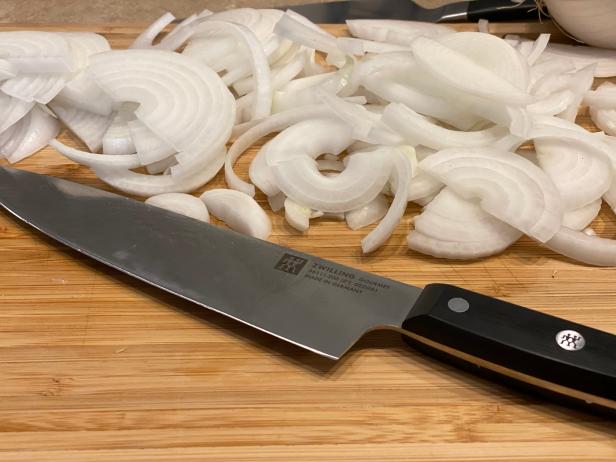
Layla Khoury-Hanold
How to Pick a Chef's Knife Style
Most knives in American kitchens are based on Western-style. They tend to be thick and heavy as they’re intended to cut through root vegetables and large cuts of meat. On a German knife, there’s a bolster and a curved blade to make it easy to glide and rock when you’re cutting and mincing. French knives have a straighter edge, which is better for slicing.
In the past decade or so, Japanese-made knives have also become popular. Designed to prep delicate foods like fish and tender vegetables with an up-and-down motion, they’re lighter and thinner and have blades with less of an angle. They're comfortable to use and good for making precise cuts, but they have to be handled more carefully and shouldn’t be used for tasks like cutting up butternut squash or through bones.
How to Choose the Right Size Chef's Knife
Comfort is also a big factor, so if you’re buying your first chef’s knife or switching brands, it can be helpful to hold the knife in your hand. Grip it as you would while cutting to assess how natural and comfortable it feels. To assess how balanced it feels in your hand, hold on to the knife at the place where the blade and handle meet. An 8-inch chef’s knife is the average length that feels comfortable for most people; if a slightly larger knife feels better to you, a 10-inch knife is a good bet. And if a smaller knife feels better to you, look for a 6-inch model. If trying out knives in-store isn’t an option, it can be helpful to shop from companies that have flexible return policies online.
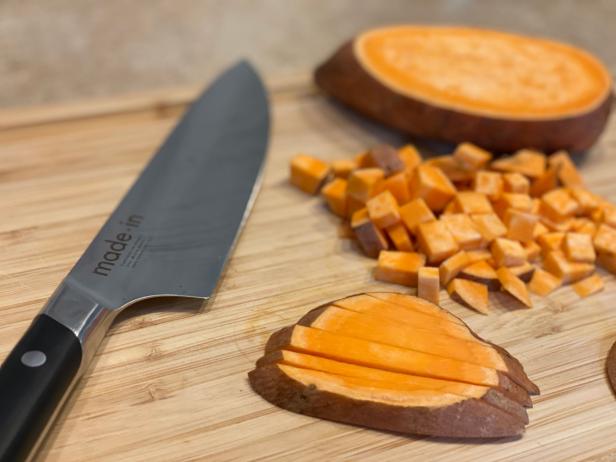
Layla Khoury-Hanold
How Much to Spend on a Chef's Knife
Since you’ll reach for your chef’s knife often, it’s wise to invest — though that doesn’t mean you have to break the bank or that more expensive equals better quality. Consider your budget and whether you have any wiggle room. If you’re deciding between a couple of brands, opt for the brand that is known for producing great knives. The bottom line: Choose something that you can afford, feels comfortable, works for you and gets you cooking!
How Often to Sharpen a Chef's Knife
Whatever knife you choose, it’s important to take good care of it. Invest in a honing steel or home knife sharpener, or get your knives sharpened professionally twice a year. Honing your knives each time before you cook can help to maintain a sharper edge longer. Remember, the sharper your knife, the less likely you are to hurt yourself.
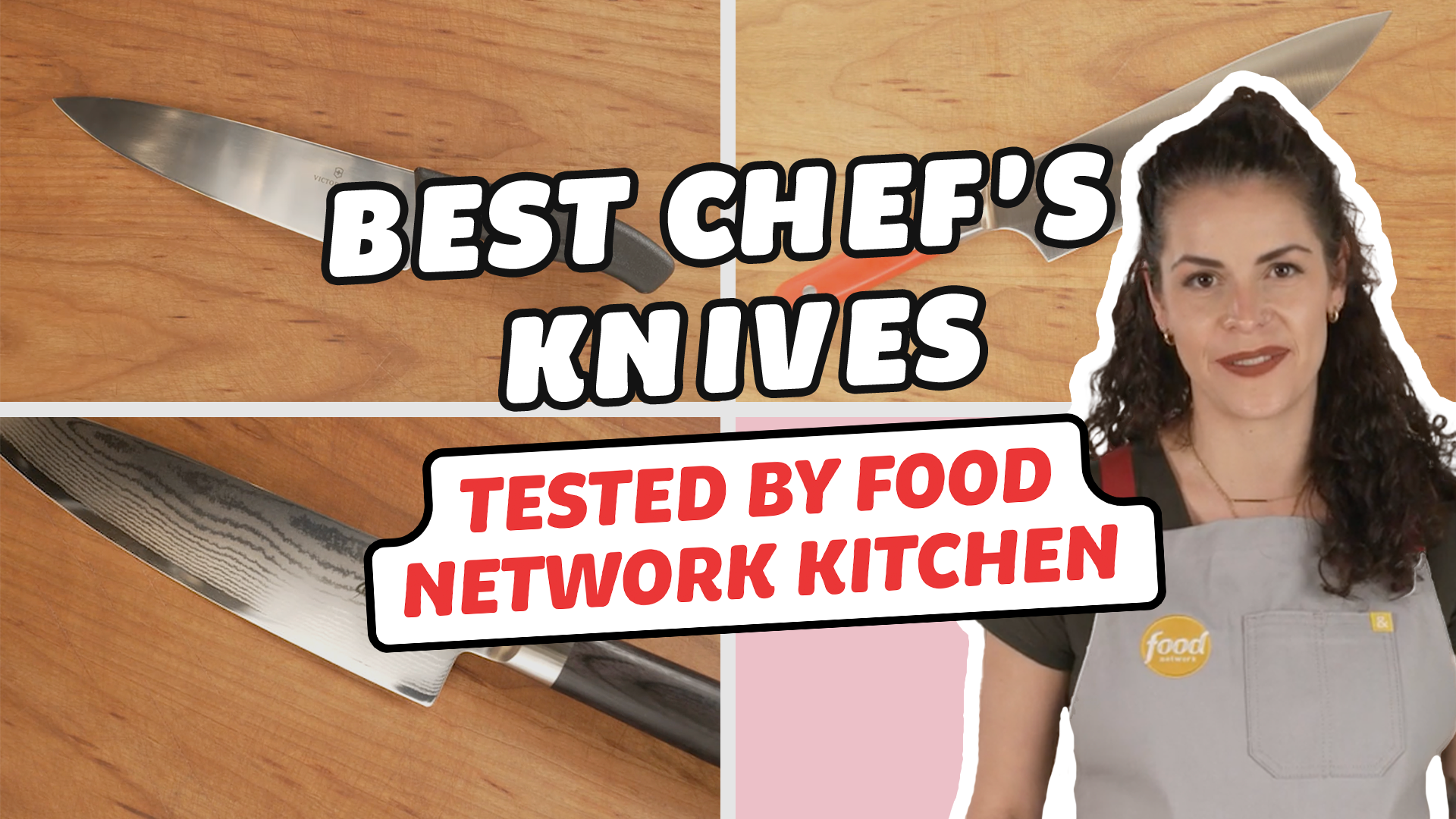
Looking for a new chef's knife? Sarah Holden, culinary producer for Food Network Kitchen, breaks down three of our top picks, above.
More Knives and Accessories We Recommend
5 Best Kitchen Knife Sets, Tested and Reviewed
These knife sets come with high-quality knives you'll actually use.
3 Best Knife Sharpeners, Tested and Reviewed
We sliced, sharpened and honed to find the best models.
4 Best Paring Knives, Tested and Reviewed
These small-but-mighty knives are great for prepping produce and tedious kitchen tasks.

























